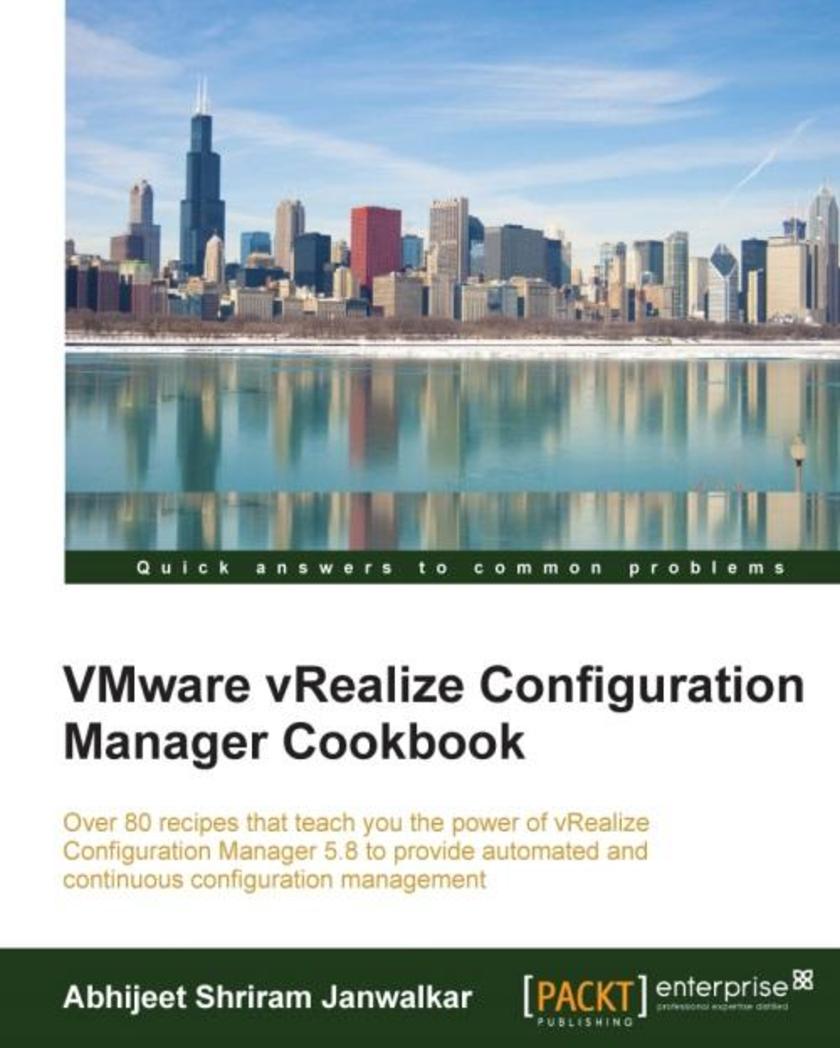
VMware vRealize Configuration Manager Cookbook
¥90.46
Over 80 recipes to teach you the power of vRealize Configuration Manager 5.8 to provide automated and continuous configuration management About This Book First book in the market that provides a broad configuration and compliance management solution for your enterprise. Champion the skills of the latest features of VMware vRealize Configuration Manager and implement it in your organization. A recipe based approach book that will enlighten you to configure VCM to collect and manage data from your virtual and physical environment. Who This Book Is For If you are a system administrator who is eager to provide better administration with VCM and are familiar with managing network users and resources along with performing system maintenance, then this book is for you. What You Will Learn Find out how to configure automated patching of your infrastructure for Windows as well Unix machines Maintain and upgrade your vRealize Configuration Manager Integrate with other VMware tools such as vCloud Director, vRealise Operations, vCenter, and vCloud Network and Security Understand what vRealize Configuration Manager is and what its capacities are Explore how vRealize Configuration Manager can be used for patching, compliance management, and software distribution Troubleshoot vRealize Configuration Manager with ease In Detail VMware vRealize Configuration Manager (VCM) helps you to automate IT operations, manage performance, and gain visibility across physical and virtual infrastructure. It is continuously being used by enterprises to audit the configurations of the VMware infrastructure as well as the Windows, Linux, and UNIX operating systems. This book is filled with practical recipes through which you will learn about the latest features of vRealize Configuration Manager 5.8.X, starting with installation of various tiers of VCM followed by configuration management across physical and virtual servers. Throughout this book, you will explore how VCM can perform tasks such as patch management, compliance assessment, and software package distribution along with Machine filters for new platforms such as RHEL 7 and Windows 10. This book will ease your troubles while upgrading from the existing VCM to the latest version by providing you with step-by-step instructions about the process of migration along with upgrade and maintenance support. This book will help you understand how to integrate vRealize Configuration with other applications along with schedule management and also guide you on how to handle security issues. After reading this book, you will have a clear understanding of how VCM fits in the overall picture of the data center design from a patching and compliance perspective. Style and approach This book takes a recipe-based approach that will provide you with an effective and a practical configuration management solution for your enterprise.
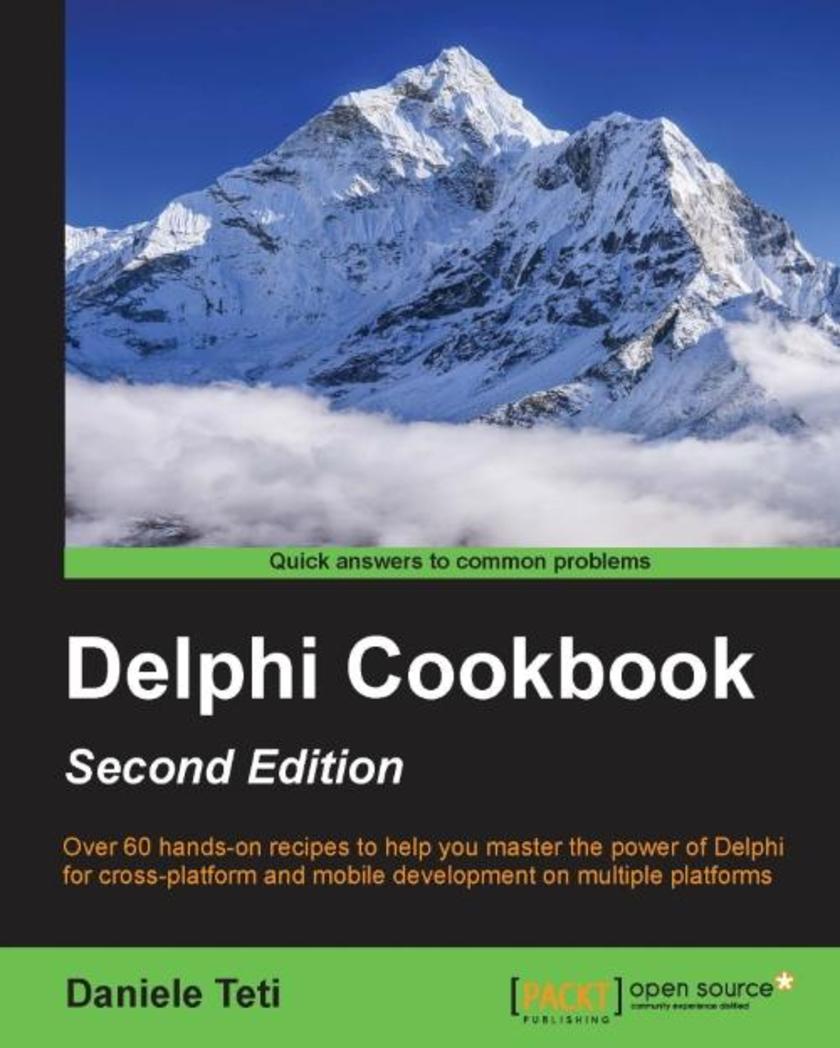
Delphi Cookbook - Second Edition
¥90.46
Over 60 hands-on recipes to help you master the power of Delphi for cross-platform and mobile development on multiple platforms About This Book Get to grips with Delphi to build and deploy various cross-platform applications Design, develop, and deploy real-world applications by implementing a single source codebase This swift guide will increase your productivity to develop applications with Delphi Who This Book Is For If you are an intermediate developer with a basic knowledge of Delphi and you want to develop cross-platform applications, then this book is for you. Familiarity with the fundamentals of RAD (Rapid Application Development) Studio is expected. What You Will Learn Develop visually stunning applications using FireMonkey Deploy LiveBinding effectively with the right OOP approach Create server-side programs to serve RESTful web services and provide data to your mobile apps Use well-defined GUI design patterns to build mobile applications that provide a great user experience Build mobile apps that read data from a remote server efficiently Call the platform native API on Android and iOS even for an unpublished API Manage software customization for your customer by making better use of an extended RTTI Implement the most popular design pattern without wasting too much time on debugging and bug fixing In Detail Delphi is a cross-platform Integrated Development Environment (IDE) that supports rapid application development for Microsoft Windows, Apple Mac OS X, Google Android, and Apple iOS. It helps you to concentrate on the real business and save yourself the pain of wandering amid GUI widget details, or having to tackle inter-platform incompatibilities. It also has a wide range of drag-and-drop controls, helping you code your business logic into your business model, and it compiles natively for desktop and mobile platforms. This book will teach you how to design and develop applications, deploy them on the cloud platform, and distribute them within an organization via Google Play and other similar platforms. You will begin with the basics of Delphi and get acquainted with JSON format strings, XSLT transformations, unicode encodings and various types of streams. We then move on to more advanced topics such as developing higher-order functions and using enumerators and RTTI. You will get an understanding of how Delphi RTL functions and how to use FireMonkey in a VCL application. We will then cover topics such as multithreading, using the parallel programming library and putting Delphi on a server. We will also take a look at the new feature of WebBroker Apache modules and then ride the mobile revolution with FireMonkey. By the end of the book, you will be able to develop and deploy cross-platform applications using Delphi. Style and approach Delphi Cookbook is an easy-to-follow guide, rich with hands-on examples of real-world programming tasks in Delphi.
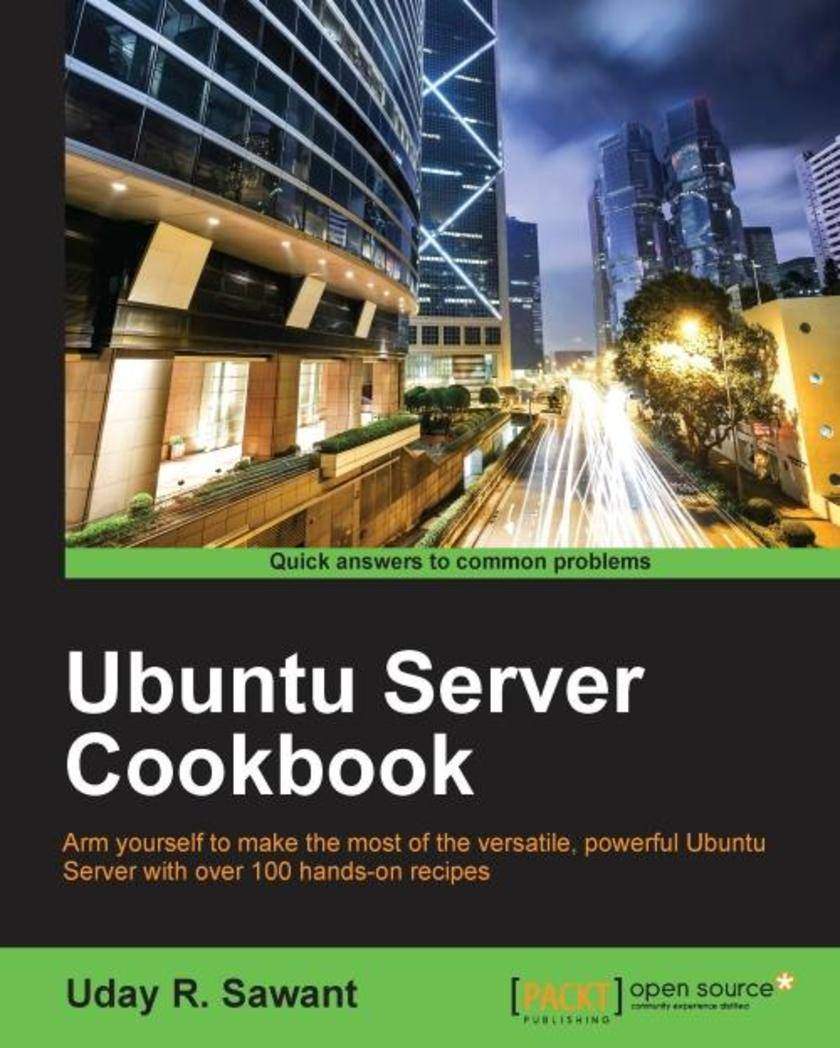
Ubuntu Server Cookbook
¥90.46
Arm yourself to make the most of the versatile, powerful Ubuntu Server with over 100 hands-on recipes About This Book Master the skills to setup secure and scalable web services with popular tools like Apache, Nginx, MySQL and HAProxy Set up your own cloud with Open Stack and quickly deploy applications with Docker or LXD Packed with clear, step-by-step recipes to let you protect you valuable data with your own chat servers, code hosting and collaboration tools. Who This Book Is For Ubuntu Server Cookbook is for system administrators or software developers with a basic understanding of the Linux operating system who want to set up their own servers. You are not required to have in-depth knowledge or hands-on experience with Ubuntu, but you should know the basics commands for directory navigation, file management, and the file editing tool. An understanding of computer networks is advisable What You Will Learn Set up high performance, scalable, and fault-tolerant back ends with web and database servers Facilitate team communication with a real-time chat service and collaboration tools Quickly deploy your applications to their own containers and scale your infrastructure as and when needed Find out how to set up your own cloud infrastructure for your internal use or rent it to the public Ensure quick and easy access for your users while also securing your infrastructure from intruders Set up a high performance private network with a personal VPN server and centralized authentication system Swiftly start a content streaming service Set up network storage for private data and source code and say good bye to costly and unreliable cloud services In Detail Ubuntu is one of the most secure operating systems and defines the highest level of security as compared other operating system. Ubuntu server is a popular Linux distribution and the first choice when deploying a Linux server. It can be used with a $35 Raspberry Pi to top-notch, thousand-dollar-per-month cloud hardware. Built with lists that there are 4 million + websites built using Ubuntu. With its easy-to-use package management tools and availability of well-known packages, we can quickly set up our own services such as web servers and database servers using Ubuntu. This book will help you develop the skills required to set up high performance and secure services with open source tools. Starting from user management and an in-depth look at networking, we then move on to cover the installation and management of web servers and database servers, as well as load balancing various services. You will quickly learn to set up your own cloud and minimize costs and efforts with application containers. Next, you will get to grips with setting up a secure real-time communication system. Finally, we’ll explore source code hosting and various collaboration tools. By the end of this book, you will be able to make the most of Ubuntu’s advanced functionalities. Style and approach This easy-to-follow guide contains a series of step-by-step recipes ranging from simple to complex. Each topic will start with basic introduction to each technology followed by a detailed step-by-step installation guide and then a detailed explanation of the approach taken during installation and the various advanced options available.
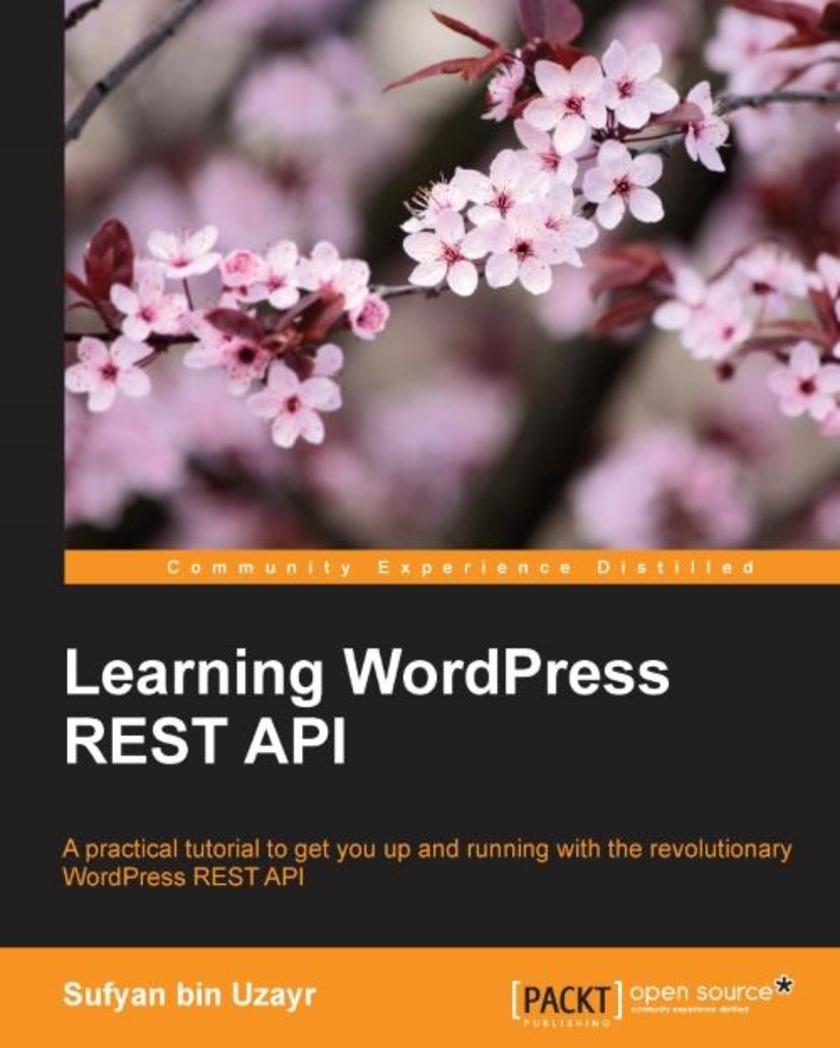
Learning WordPress REST API
¥54.49
A practical tutorial to get you up and running with the revolutionary WordPress REST API About This Book Learn how to run the latest WordPress REST API with various platforms Create exciting apps and manage non-WordPress content with them Secure, export, and manage your data through illustrative examples Who This Book Is For This book is for WordPress developers and designers who want to get a complete practical understanding of the WordPress REST API and leverage it to create fully-featured web apps. What You Will Learn Use the WordPress REST API to read, write, and edit posts Create and work with metadata using the WordPress REST API Work with taxonomies using the REST API Add custom routes and build apps using the WordPress REST API Process requests and integrate with external applications and frameworks Make your WordPress projects ready for the RESTful API standard In Detail The WordPress REST API is a recent innovation that has the potential to unlock several new opportunities for WordPress developers. It can help you integrate with technologies outside of WordPress, as well as offer great flexibility when developing themes and plugins for WordPress. As such, the REST API can make developers’ lives easier. The book begins by covering the basics of the REST API and how it can be used along with WordPress. Learn how the REST API interacts with WordPress, allowing you to copy posts and modify post metadata. Move on to get an understanding of taxonomies and user roles are in WordPress and how to use them with the WordPress REST API. Next, find out how to edit and process forms with AJAX and how to create custom routes and functions. You will create a fully-functional single page web app using a WordPress site and the REST API. Lastly, you will see how to deal with the REST API in future versions and will use it to interact it with third-party services. By the end of the book, you will be able to work with the WordPress REST API to build web applications. Style and Approach A step by step tutorial to explain the new and exciting world of the WordPress REST API with the real world examples.
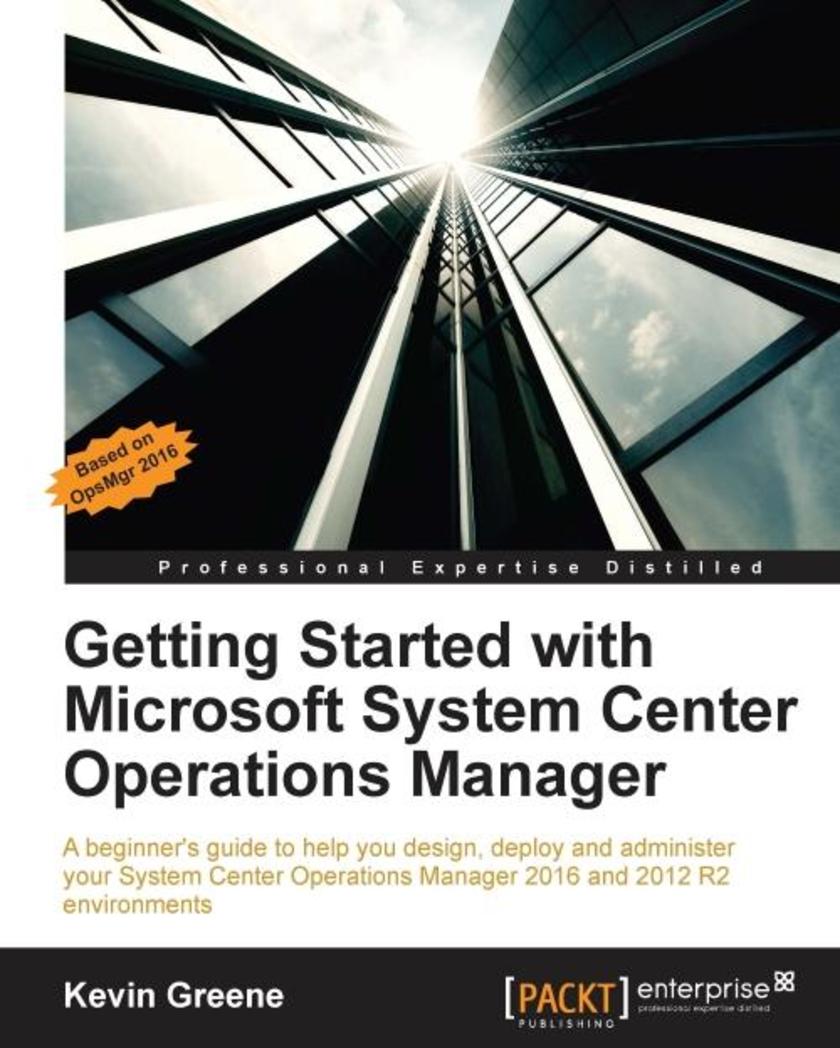
Getting Started with Microsoft System Center Operations Manager
¥107.90
A beginner's guide to help you design, deploy and administer your System Center Operations Manager 2016 and 2012 R2 environments About This Book Discover how to monitor complex IT environments with System Center Operations Manager using tips, tricks and best practice recommendations from industry experts. Learn how to create eye-catching dashboards and reports to help deliver a tangible return on investment back to your organization. Optimize, troubleshoot and perform disaster recovery in Operations Manager using step by step examples based on real-world scenarios. Who This Book Is For The target audience for this book is the IT Pro or System Administrator who wants to deploy and use System Center Operations Manager but has no previous knowledge of the product. As a ‘Getting Started’ book, our primary objective is to equip you with the knowledge you need to feel comfortable when working with common monitoring scenarios in OpsMgr. With this in mind, deep-diving into less-common OpsMgr features such as Audit Collection Services (ACS), Agentless Exception Monitoring (AEM) and Application Performance Monitoring (APM) has been intentionally omitted. What You Will Learn Install a new System Center 2016 Operations Manager Management Group Design and provision custom views to relevant support teams. Understand how to deploy agents Work with management packs Monitor network devices Model your IT services with distributed applications Create dashboards and custom visualizations Tune, optimize, maintain and troubleshoot System Center Operations Manager In Detail Most modern IT environments comprise a heterogeneous mixture of servers, network devices, virtual hypervisors, storage solutions, cross-platform operating systems and applications. All this complexity brings a requirement to deliver a centralized monitoring and reporting solution that can help IT administrators quickly identify where the problems are and how best to resolve them. Using System Center Operations Manager (OpsMgr), administrators get a full monitoring overview of the IT services they have responsibility for across the organization - along with some useful management capabilities to help them remediate any issues they've been alerted to. This book begins with an introduction to OpsMgr and its core concepts and then walks you through designing and deploying the various roles. After a chapter on exploring the consoles, you will learn how to deploy agents, work with management packs, configure network monitoring and model your IT services using distributed applications. There’s a chapter dedicated to alert tuning and another that demonstrates how to visualize your IT using dashboards. The final chapters in the book discuss how to create alert sub*ions, manage reports, backup and recover OpsMgr, perform maintenance and troubleshoot common problems. Style and approach A beginner’s guide that focuses on providing the practical skills required to effectively deploy and administer OpsMgr with walkthrough examples and tips on all the key concepts.
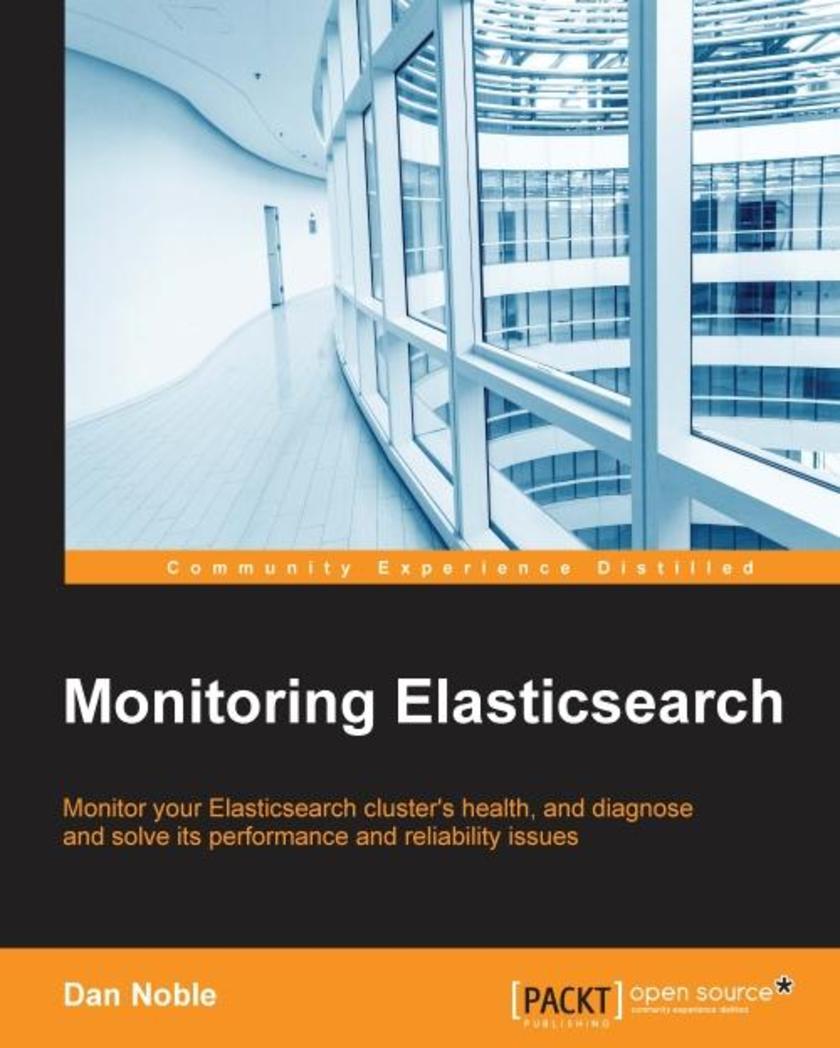
Monitoring Elasticsearch
¥63.21
Monitor your Elasticsearch cluster's health, and diagnose and solve its performance and reliability issues About This Book Understand common performance and reliability pitfalls in ElasticSearch Use popular monitoring tools such as ElasticSearch-head, BigDesk, Marvel, Kibana, and more This is a step-by-step guide with lots of case studies on solving real-world ElasticSearch cluster issues Who This Book Is For This book is for developers and system administrators who use ElasticSearch in a wide range of capacities. Prior knowledge of ElasticSearch and related technologies would be helpful, but is not necessary. What You Will Learn Explore your cluster with ElasticSearch-head and BigDesk Access the underlying data of the ElasticSearch monitoring plugins using the ElasticSearch API Analyze your cluster’s performance with Marvel Troubleshoot some of the common performance and reliability issues that come up when using ElasticSearch Analyze a cluster’s historical performance, and get to the bottom of and recover from system failures Use and install various other tools and plugins such as Kibana and Kopf, which is helpful to monitor ElasticSearch In Detail ElasticSearch is a distributed search server similar to Apache Solr with a focus on large datasets, a schema-less setup, and high availability. This schema-free architecture allows ElasticSearch to index and search unstructured content, making it perfectly suited for both small projects and large big data warehouses with petabytes of unstructured data. This book is your toolkit to teach you how to keep your cluster in good health, and show you how to diagnose and treat unexpected issues along the way. You will start by getting introduced to ElasticSearch, and look at some common performance issues that pop up when using the system. You will then see how to install and configure ElasticSearch and the ElasticSearch monitoring plugins. Then, you will proceed to install and use the Marvel dashboard to monitor ElasticSearch. You will find out how to troubleshoot some of the common performance and reliability issues that come up when using ElasticSearch. Finally, you will analyze your cluster’s historical performance, and get to know how to get to the bottom of and recover from system failures. This book will guide you through several monitoring tools, and utilizes real-world cases and dilemmas faced when using ElasticSearch, showing you how to solve them simply, quickly, and cleanly. Style and approach This is a step-by-step guide to monitoring your ElasticSearch cluster and correcting performance issues. It is filled with lots of in-depth, real-world use-cases on solving different ElasticSearch cluster issues.

Mastering Unreal Engine 4.X
¥90.46
Take your game development skills to the next level with one of the best engines on the market About This Book Build an entire AAA game level throughout the book Take your C++ *ing skills to the next level and use them extensively to build the game An advanced practical guide with a tutorial style approach that will help you make the best of Unreal engine 4 Who This Book Is For This book is for game developers who have a basic knowledge of Unreal Engine and C++ *ing knowledge. If you want to take the leap from a casual game developer to a full-fledged professional game developer with Unreal Engine 4, this is the book for you. What You Will Learn Script your player controls in C++ Build a superb and engaging level with advanced design techniques Program AI with C++ Use Cascade to add life to your games Use custom shaders and advanced shading techniques to make things pretty Implement an awesome UI in the game Control gameplay using data tables In Detail Unreal Engine 4 has garnered a lot of attention in the gaming world because of its new and improved graphics and rendering engine, the physics simulator, particle generator, and more. This book is the ideal guide to help you leverage all these features to create state-of-the-art games that capture the eye of your audience. Inside we’ll explain advanced shaders and effects techniques and how you can implement them in your games. You’ll create custom lighting effects, use the physics simulator to add that extra edge to your games, and create customized game environments that look visually stunning using the rendering technique. You’ll find out how to use the new rendering engine efficiently, add amazing post-processing effects, and use data tables to create data-driven gameplay that is engaging and exciting. By the end of this book, you will be able to create professional games with stunning graphics using Unreal Engine 4! Style and approach An advanced guide that will take you to the next level of developing games with Unreal engine with illustrative examples that will make you confident of creating customized professional level games on your won.
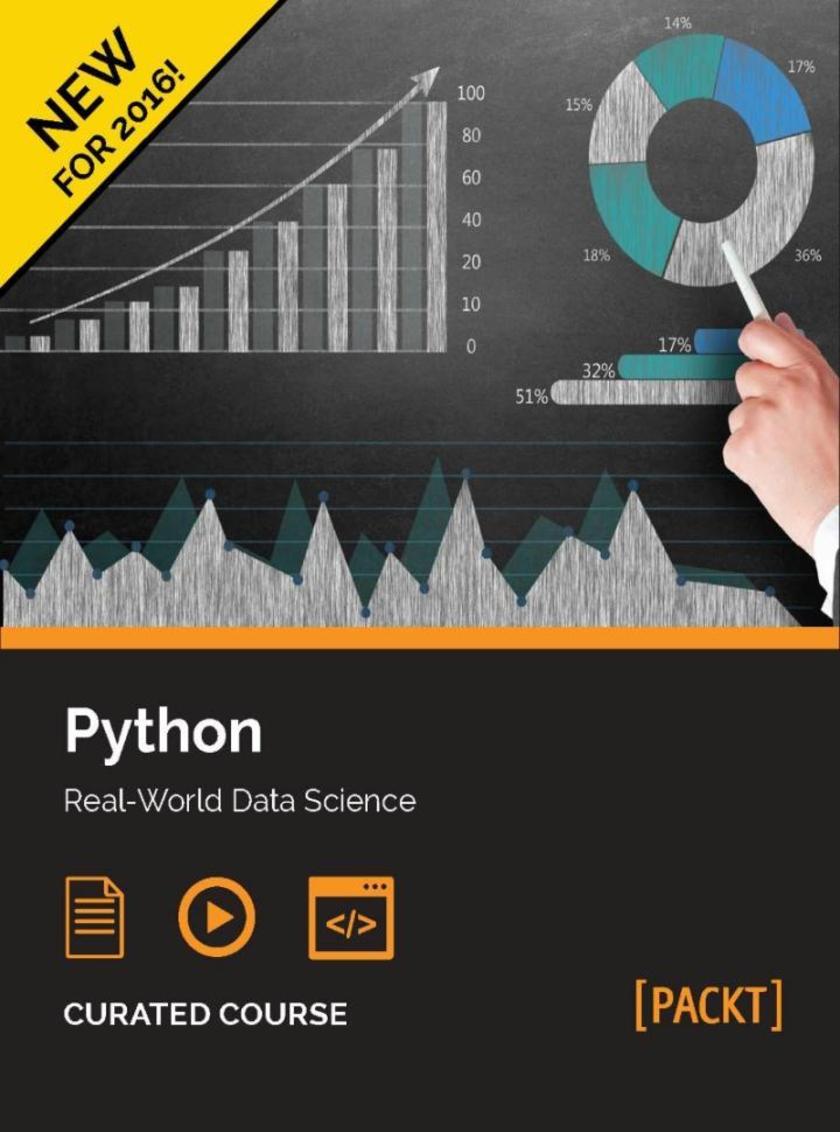
Python: Real-World Data Science
¥171.12
Unleash the power of Python and its robust data science capabilities About This Book Unleash the power of Python 3 objects Learn to use powerful Python libraries for effective data processing and analysis Harness the power of Python to analyze data and create insightful predictive models Unlock deeper insights into machine learning with this vital guide to cutting-edge predictive analytics Who This Book Is For Entry-level analysts who want to enter in the data science world will find this course very useful to get themselves acquainted with Python’s data science capabilities for doing real-world data analysis. What You Will Learn Install and setup Python Implement objects in Python by creating classes and defining methods Get acquainted with NumPy to use it with arrays and array-oriented computing in data analysis Create effective visualizations for presenting your data using Matplotlib Process and analyze data using the time series capabilities of pandas Interact with different kind of database systems, such as file, disk format, Mongo, and Redis Apply data mining concepts to real-world problems Compute on big data, including real-time data from the Internet Explore how to use different machine learning models to ask different questions of your data In Detail The Python: Real-World Data Science course will take you on a journey to become an efficient data science practitioner by thoroughly understanding the key concepts of Python. This learning path is divided into four modules and each module are a mini course in their own right, and as you complete each one, you’ll have gained key skills and be ready for the material in the next module. The course begins with getting your Python fundamentals nailed down. After getting familiar with Python core concepts, it’s time that you dive into the field of data science. In the second module, you'll learn how to perform data analysis using Python in a practical and example-driven way. The third module will teach you how to design and develop data mining applications using a variety of datasets, starting with basic classification and affinity analysis to more complex data types including text, images, and graphs. Machine learning and predictive analytics have become the most important approaches to uncover data gold mines. In the final module, we'll discuss the necessary details regarding machine learning concepts, offering intuitive yet informative explanations on how machine learning algorithms work, how to use them, and most importantly, how to avoid the common pitfalls. Style and approach This course includes all the resources that will help you jump into the data science field with Python and learn how to make sense of data. The aim is to create a smooth learning path that will teach you how to get started with powerful Python libraries and perform various data science techniques in depth.

Learning ClojureScript
¥71.93
Master the art of agile single page web application development with ClojureScript About This Book Set up interactive development workflows for the browser or Node.js thanks to the ClojureScript ecosystem Learn the basics of interactive single page web app development taking advantage of the functional nature of ClojureScript Delve into advanced rich web application development concepts such as Om, along with core.async, using zippers and logic programming, and preparing code for production with testing or optimizing via the Google Closure Compiler Who This Book Is For This book is for web application developers who want to benefit from the power of ClojureScript to get an agile and highly productive development platform that targets mainly browser JavaScript. You are not required to be fluent in Clojure, but it will be easier for you if you have a basic understanding of browser and server-side JavaScript. What You Will Learn Understand how the ClojureScript compiler operates Set up interactive development workflows for ClojureScript Grasp the basics of the ClojureScript language, including basic syntax, data structures, variable scoping, namespaces, and finally the powerful sequence abstraction Delve into advanced concepts such as functional programming, macro writing, asynchronous programming, app routing, and real-time web Develop simple one page web applications Explore techniques to make your web apps aware of the external world through external or embedded database access or Oauth 2 integration Learn more advanced ClojureScript concepts like in app routing, real-time web Prepare your work for production, getting insights into optional type-checking, writing portable Clojure/ClojureScript code, and testing In Detail Clojure is an expressive language that makes it possible to easily tackle complex software development challenges. Its bias toward interactive development has made it a powerful tool, enabling high developer productivity. In this book, you will first learn how to construct an interactive development experience for ClojureScript.. You will be guided through ClojureScript language concepts, looking at the basics first, then being introduced to advanced concepts such as functional programming or macro writing. After that, we elaborate on the subject of single page web applications, showcasing how to build a simple one, then covering different possible enhancements. We move on to study more advanced ClojureScript concepts, where you will be shown how to address some complex algorithmic cases. Finally, you'll learn about optional type-checking for your programs, how you can write portable code, test it, and put the advanced compilation mode of the Google Closure Compiler to good use. Style and approach This book is a comprehensive reference guide on ClojureScript development for the front end, and will gradually help you master interactive ClojureScript development workflows, through detailed step-by-step information illustrated with annotated code samples.
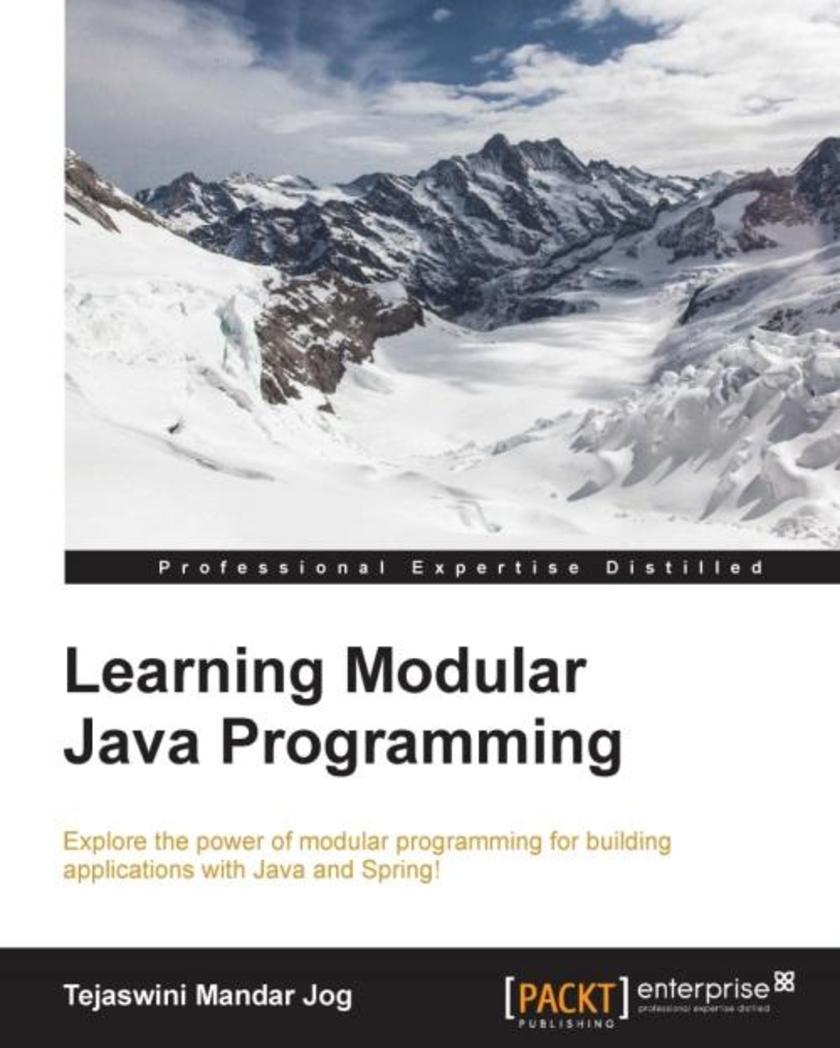
Learning Modular Java Programming
¥63.21
Explore the power of modular programming for building applications with Java and Spring! About This Book Understand the basic concepts of Modular Programming to build enterprise applications with Java Create short and precise code and eliminate recursion The book follows a step-by-step approach that makes implementing Modular Programming easy Who This Book Is For This book targets Java developers who have a basic knowledge of application development with Java and are interested in learning the Modular Programming approach for building reusable applications that are easy to test, and thus improve overall project management. What You Will Learn Learn about Modular Programming and what modules an enterprise application can be divided into. Set up a development environment and create a "Hello World" application. Start implementing a sample application from the presentation layer. Implement the persistence layer. Implement the business layer, wrapping up all of the modules with Contexts and Dependency Injection (CDI). Manage an application's life cycle. Learn how to secure Web applications. Test enterprise applications and their automation. Understand how to version source code using Source Code Management (SCM) systems such as GIT and SVN. In Detail Modular programming means dividing an application into small parts and then developing it. It is an approach taken by developers to build applications and helps them add efficiency in their development process, thus making it more effective. The book starts with the fundamentals of Modular Programming. Then we move on to the actual implementation, where we teach developers how to divide an application into different modules or layers (such as presentation, execution, security, lifecycle, services, and so on) for better management. Once readers are well-versed in these modules and their development, the book shows how to create bindings in order to join these different modules and form a complete application. Next, the readers will learn how to manage these modules through dependency injection. Later, we move on to testing; readers will learn how to test the different modules of an application. The book ends by teaching readers how to maintain different versions of their application and how to modify it. By the end of the book, readers will have a good understanding of modular programming and will be able to use it to build applications with Java. Style and approach This book is a practical guide to help readers learn Modular Programming with Java and build an enterprise-ready app along the way. The book is divided into three major sections. The first teaches the fundamentals of Modular Programming and how to implement them; the second teaches readers to combine and manage the modules developed; in the final section, the book explains the applications of Modular Programming.

Magento Extensions Development
¥71.93
Design, build, and maintain a powerful, secure, and complete extension for Magento 2, the world’s favorite e-commerce platform About This Book Deploy a complete real-world extension step by step Construct your extension with the best and most up-to-date development methods Learn about team working and code sharing Who This Book Is For If you want to write a specific customization or a large new and full-featured extension on Magento 2, this book is intended for you. You must be an intermediate to professional-level developer in PHP to appreciate this book. What You Will Learn Build a fully-functional complex extension to add new functionality to Magento Register your code with GIT and work with your team Write new layouts and templates Set up a fully configurable grid and forms in the backend Create code unit tests and run them through TDD Propose localized contents Develop optimized extensions for a high-load environment Publish extensions on the Magento Connect Marketplace In Detail Magento has been revealed as the best and the most popular open source e-commerce platform in the world, with about 250k+ online stores. Magento 2 is the most recent version of this awesome toolset: every new and modern development techniques are used to offer a real modular approach and powerful architecture. The book will support you in the writing of innovative and complex extensions. Starting from the beginning, we will cover how to set up a development environment that allows you to be really efficient in your functionality writing, including GIT registering and many other development tools. We then move on to provide a large overview of the best practices to scale your module in a high-load environment. After these foundations, you will see how to use test driven-development (TDD) and unit tests to handle your code. We then build a complex extension together, step by step, and internationally-ready. Next, you will find out how to protect the users’ data. Finally, we will take a look a publishing the extension on the new Magento Connect marketplace and how to protect your intellectual property. After you read this book, you will know everything you need to know to become an invaluable extension editor, whether it is for your customers’ needs or for your own requirements. Style and approach This book takes a step-by-step approach to developing the extension and learning the new concepts of developments. Each topic is explained sequentially in the process of creating the extension, and punctuated by detailed explanations of the features of the code.
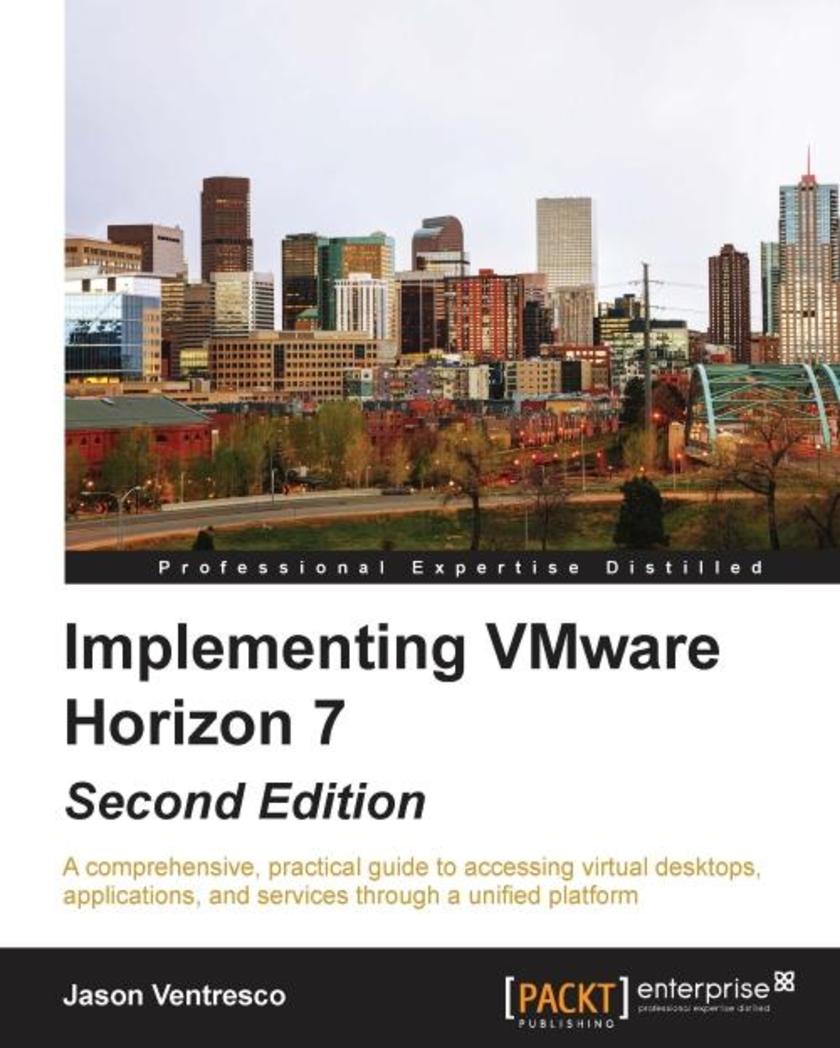
Implementing VMware Horizon 7 - Second Edition
¥107.90
A comprehensive, practical guide to accessing virtual desktops, applications, and services through a unified platform About This Book This is the first book on the market that delivers desktops and applications through a single Virtual Desktop Infrastructure platform Reduce enterprise costs by dynamically allocating resources with virtual storage, compute and networking This comprehensive guide provides simplified operations, improved security, and accelerated time-to-value using VMware Horizon 7 Who This Book Is For If you are a newcomer to system administration, and you wish to implement the Horizon environment, then this book is for you. Prior knowledge of Horizon is beneficial. What You Will Learn Walk through the configuration of VMware Horizon, including the new Horizon Access Point appliance Implement a multi-site VMware Horizon pod using the Cloud Pod Architecture feature Understand the integration between VMware Horizon and VSAN, and see how they are deployed together Explore how to implement and maintain Microsoft RDS and Linux and Windows Desktop Pools Create and optimize desktop master images. Understand how to manage the SSL certificates for each of the VMware Horizon components. In Detail VMware Horizon 7 has been a buzz since it was announced. One of the major reasons is the introduction of the new Instant Clones feature. This book will complement the product documentation by providing real-life examples of how it is implemented along with the latest features and components of the platform. We'll explore the latest features of the platform, including those added through product acquisitions such as User Environment Manager and App Volumes. Further on, you will also be introduced to the new capabilities added to the core product such Linked-Clone RDS pools. Upon completion of this book, you will have an understanding of the capabilities and benefits VMware Horizon can provide to your organization, and how each of its components are implemented. Style and approach This comprehensive guide focuses on the practicality of VMware Horizon and how you can implement it in your organization.

CISSP in 21 Days - Second Edition
¥80.65
Boost your confidence and get the competitive edge you need to crack the exam in just 21 days! About This Book Day-by-day plan to study and assimilate core concepts from CISSP CBK Revise and take a mock test at the end of every four chapters A systematic study and revision of myriad concepts to help you crack the CISSP examination Who This Book Is For If you are a Networking professional aspiring to take the CISSP examination and obtain the coveted CISSP certification (considered to be the Gold Standard in Information Security personal certification), then this is the book you want. This book assumes that you already have sufficient knowledge in all 10 domains of the CISSP CBK by way of work experience and knowledge gained from other study books. What You Will Learn Review Exam Cram and Practice review questions to reinforce the required concepts Follow the day–by-day plan to revise important concepts a month before the CISSPexam Boost your time management for the exam by attempting the mock question paper Develop a structured study plan for all 10 CISSPdomains Build your understanding of myriad concepts in the Information Security domain Practice the full-blown mock test to evaluate your knowledge and exam preparation In Detail Certified Information Systems Security Professional (CISSP) is an internationally recognized and coveted qualification. Success in this respected exam opens the door to your dream job as a security expert with an eye-catching salary. But passing the final exam is challenging. Every year a lot of candidates do not prepare sufficiently for the examination, and fail at the final stage. This happens when they cover everything but do not revise properly and hence lack confidence. This simple yet informative book will take you through the final weeks before the exam with a day-by-day plan covering all of the exam topics. It will build your confidence and enable you to crack the Gold Standard exam, knowing that you have done all you can to prepare for the big day. This book provides concise explanations of important concepts in all 10 domains of the CISSP Common Body of Knowledge (CBK). Starting with Confidentiality, Integrity, and Availability, you will focus on classifying information and supporting assets. You will understand data handling requirements for sensitive information before gradually moving on to using secure design principles while implementing and managing engineering processes. You will understand the application of cryptography in communication security and prevent or mitigate strategies for network attacks. You will also learn security control requirements and how to assess their effectiveness. Finally, you will explore advanced topics such as automated and manual test result analysis and reporting methods. A complete mock test is included at the end to evaluate whether you're ready for the exam. This book is not a replacement for full study guides; instead, it builds on and reemphasizes concepts learned from them. Style and approach There are many overlapping concepts that are applicable to more than one security domain in the CISSP exam. Hence, the eight security domains are aligned in a logical order so as to cover the concepts in the most appropriate sequence in this guide. Each chapter provides an illustration in the form of a flow diagram at the start to supply an overall view of the concepts covered in that chapter. This will facilitate a bird's-eye view of the chapter contents and the core security concepts covered. You can refer to this book throughout while preparing for the test or most importantly systematically revise the eight domains on a day-by-day basis up to one month before the exam. Hence the chapters are divided into 21 convenient days.
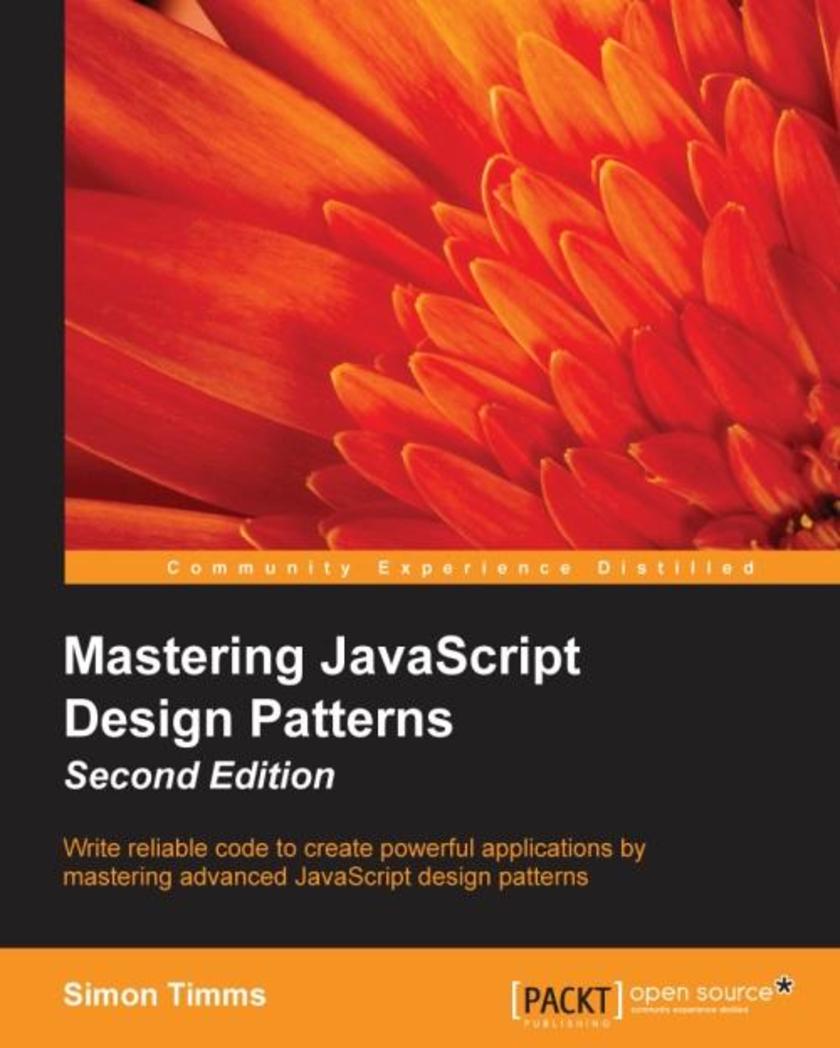
Mastering JavaScript Design Patterns - Second Edition
¥71.93
Write reliable code to create powerful applications by mastering advanced JavaScript design patterns About This Book Learn how to use tried and true software design methodologies to enhance your JavaScript code Discover robust JavaScript implementations of classic and advanced design patterns Packed with easy-to-follow examples that can be used to create reusable code and extensible designs Who This Book Is For This book is ideal for JavaScript developers who want to gain expertise in object-oriented programming with JavaScript and the new capabilities of ES-2015 to improve their web development skills and build professional-quality web applications. What You Will Learn Harness the power of patterns for tasks ranging from application building to code testing Rethink and revitalize your code with the use of functional patterns Improve the way you organize your code Build large-scale apps seamlessly with the help of reactive patterns Identify the best use cases for microservices Get to grips with creational, behavioral, and structural design patterns Explore advanced design patterns including dependency injection In Detail With the recent release of ES-2015, there are several new object-oriented features and functions introduced in JavaScript. These new features enhance the capabilities of JavaScript to utilize design patterns and software design methodologies to write powerful code. Through this book, you will explore how design patterns can help you improve and organize your JavaScript code. You’ll get to grips with creational, structural and behavioral patterns as you discover how to put them to work in different scenarios. Then, you'll get a deeper look at patterns used in functional programming, as well as model view patterns and patterns to build web applications. This updated edition will also delve into reactive design patterns and microservices as they are a growing phenomenon in the world of web development. You will also find patterns to improve the testability of your code using mock objects, mocking frameworks, and monkey patching. We’ll also show you some advanced patterns including dependency injection and live post processing. By the end of the book, you'll be saved of a lot of trial and error and developmental headaches, and you will be on the road to becoming a JavaScript expert. Style and approach Packed with several real-world use cases, this book shows you through step-by-step instructions how to implement the advanced object-oriented programming features to build sophisticated web applications that promote scalability and reusability.

Mobile Device Exploitation Cookbook
¥71.93
Over 40 recipes to master mobile device penetration testing with open source tools About This Book Learn application exploitation for popular mobile platforms Improve the current security level for mobile platforms and applications Discover tricks of the trade with the help of code snippets and screenshots Who This Book Is For This book is intended for mobile security enthusiasts and penetration testers who wish to secure mobile devices to prevent attacks and discover vulnerabilities to protect devices. What You Will Learn Install and configure Android SDK and ADB Analyze Android Permission Model using ADB and bypass Android Lock Screen Protection Set up the iOS Development Environment - Xcode and iOS Simulator Create a Simple Android app and iOS app and run it in Emulator and Simulator respectively Set up the Android and iOS Pentesting Environment Explore mobile malware, reverse engineering, and code your own malware Audit Android and iOS apps using static and dynamic analysis Examine iOS App Data storage and Keychain security vulnerabilities Set up the Wireless Pentesting Lab for Mobile Devices Configure traffic interception with Android and intercept Traffic using Burp Suite and Wireshark Attack mobile applications by playing around with traffic and SSL certificates Set up the Blackberry and Windows Phone Development Environment and Simulator Setting up the Blackberry and Windows Phone Pentesting Environment Steal data from Blackberry and Windows phones applications In Detail Mobile attacks are on the rise. We are adapting ourselves to new and improved smartphones, gadgets, and their accessories, and with this network of smart things, come bigger risks. Threat exposure increases and the possibility of data losses increase. Exploitations of mobile devices are significant sources of such attacks. Mobile devices come with different platforms, such as Android and iOS. Each platform has its own feature-set, programming language, and a different set of tools. This means that each platform has different exploitation tricks, different malware, and requires a unique approach in regards to forensics or penetration testing. Device exploitation is a broad subject which is widely discussed, equally explored by both Whitehats and Blackhats. This cookbook recipes take you through a wide variety of exploitation techniques across popular mobile platforms. The journey starts with an introduction to basic exploits on mobile platforms and reverse engineering for Android and iOS platforms. Setup and use Android and iOS SDKs and the Pentesting environment. Understand more about basic malware attacks and learn how the malware are coded. Further, perform security testing of Android and iOS applications and audit mobile applications via static and dynamic analysis. Moving further, you'll get introduced to mobile device forensics. Attack mobile application traffic and overcome SSL, before moving on to penetration testing and exploitation. The book concludes with the basics of platforms and exploit tricks on BlackBerry and Windows Phone. By the end of the book, you will be able to use variety of exploitation techniques across popular mobile platforms with stress on Android and iOS. Style and approach This is a hands-on recipe guide that walks you through different aspects of mobile device exploitation and securing your mobile devices against vulnerabilities. Recipes are packed with useful code snippets and screenshots.
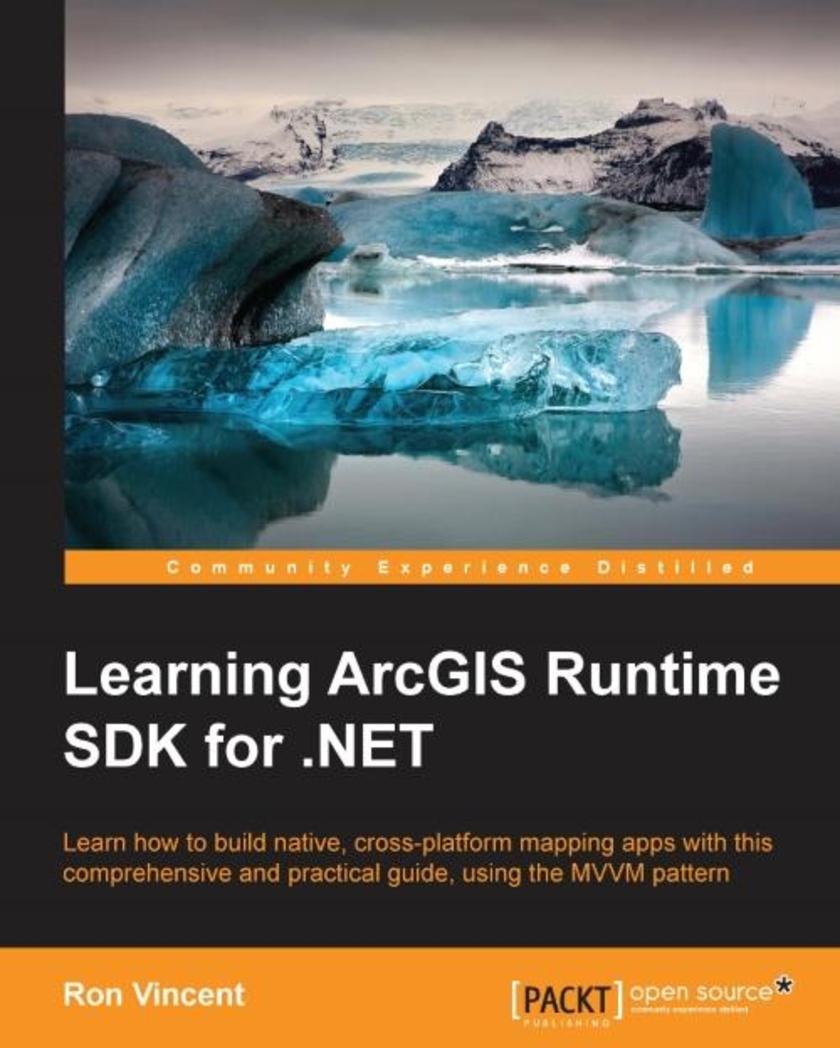
Learning ArcGIS Runtime SDK for .NET
¥80.65
Learn how to build native, cross-platform mapping apps with this comprehensive and practical guide, using the MVVM pattern About This Book Enhance the user experience with the power of ArcGIS runtime SDK for .NET. This clear, well segregated book has all the information you need on ArcGIS Runtime SDK. Just name it—this book has it! This highly practical book empowers you to build your own custom application! Get to know the inner details of ArcGIS Runtime SDK from our experts, in this book written by Ron Vincent, with 24 years' experience in the GIS industry and many in GIS training. Who This Book Is For This book caters to long-term users of Esri’s technologies that are new to mobile development or are transitioning from older Esri technologies such as ArcGIS Engine. It is also for users who are unfamiliar with Esri or GIS and are in need of a mapping solution for either their desktop or a mobile platform, or both. The book requires knowledge of .NET. What You Will Learn Understand and implement the MVVM pattern using MVVM Light Create and add layers from offline and online resources such as ArcGIS Online or ArcGIS for Server Create a 2D or 3D map and decide what kind of symbology to use Symbolize the layers based on the geometry Search and find objects in the layers Geocode an address and create a route using an address Edit layer objects from online content and offline content Test the application using test-driven development and then build and release the application for the intended audience In Detail ArcGIS is a geographic information system (GIS) that enables you to work with maps and geographic information. It can be used to create and utilize maps, compile geographic data, analyze mapped information, share and discover geographic information and manage geographic information in a database. This book starts by showing you where ArcGIS Runtime fits within Esri’s overall platform strategy. You'll create an initial map using the SDK, then use it to get an understanding of the MVVM model. You'll find out about the different kinds of layers and start adding layers, and you'll learn to transform maps into a 3D scene. The next chapters will help you comprehend and extract information contained in the maps using co-ordinates and layer objects. Towards the end, you will learn to set the symbology, decide whether to use 2D or 3D, see how to implement 2D or 3D, and learn to search and find objects. You'll also get to grips with many other standard features of the Application Programming Interface (API), including create applications and finally testing, licensing, and deploying them. Once completed, you will be able to meet most of the common requirements of any mapping application for desktop or mobile platforms. Style and approach This comprehensive book takes a completely practical approach, where every chapter explains the important concepts and demonstrates a practical application of them in a hands-on manner.
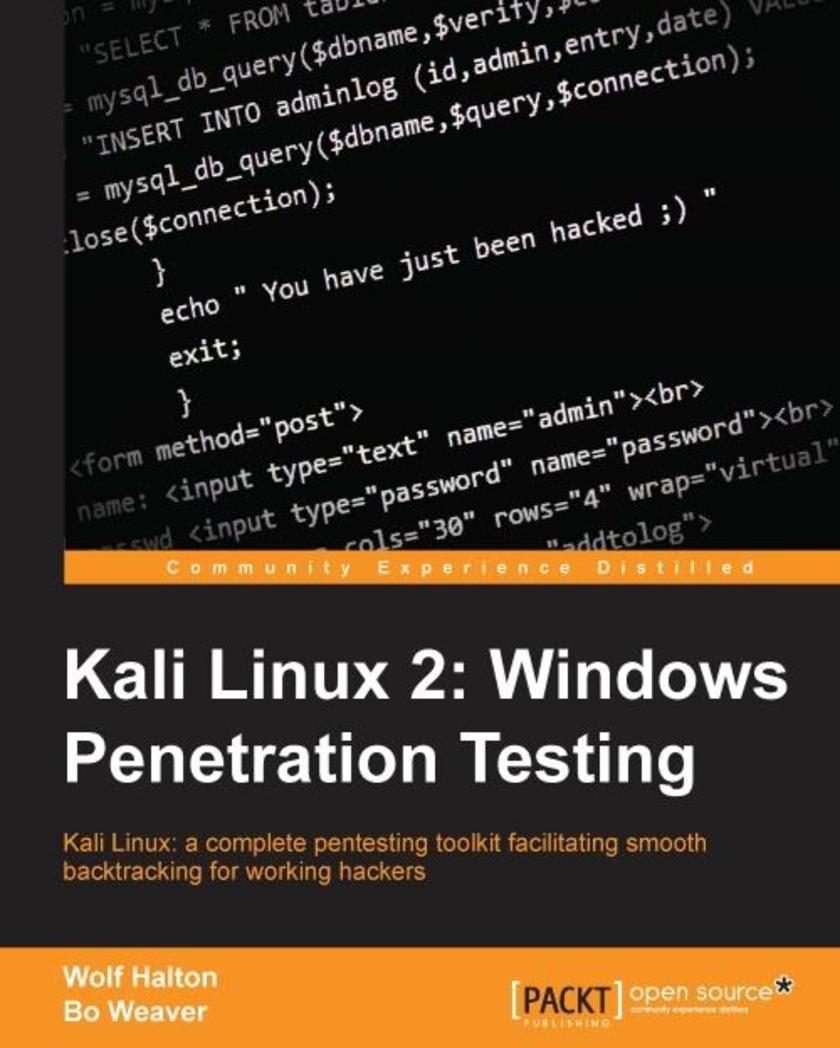
Kali Linux 2: Windows Penetration Testing
¥90.46
Kali Linux: a complete pentesting toolkit facilitating smooth backtracking for working hackers About This Book Conduct network testing, surveillance, pen testing and forensics on MS Windows using Kali Linux Footprint, monitor, and audit your network and investigate any ongoing infestations Customize Kali Linux with this professional guide so it becomes your pen testing toolkit Who This Book Is For If you are a working ethical hacker who is looking to expand the offensive skillset with a thorough understanding of Kali Linux, then this is the book for you. Prior knowledge about Linux operating systems and the BASH terminal emulator along with Windows desktop and command line would be highly beneficial. What You Will Learn Set up Kali Linux for pen testing Map and enumerate your Windows network Exploit several common Windows network vulnerabilities Attack and defeat password schemes on Windows Debug and reverse-engineer Windows programs Recover lost files, investigate successful hacks and discover hidden data in innocent-looking files Catch and hold admin rights on the network, and maintain backdoors on the network after your initial testing is done In Detail Microsoft Windows is one of the two most common OS and managing its security has spawned the discipline of IT security. Kali Linux is the premier platform for testing and maintaining Windows security. Kali is built on the Debian distribution of Linux and shares the legendary stability of that OS. This lets you focus on using the network penetration, password cracking, forensics tools and not the OS. This book has the most advanced tools and techniques to reproduce the methods used by sophisticated hackers to make you an expert in Kali Linux penetration testing. First, you are introduced to Kali's top ten tools and other useful reporting tools. Then, you will find your way around your target network and determine known vulnerabilities to be able to exploit a system remotely. Next, you will prove that the vulnerabilities you have found are real and exploitable. You will learn to use tools in seven categories of exploitation tools. Further, you perform web access exploits using tools like websploit and more. Security is only as strong as the weakest link in the chain. Passwords are often that weak link. Thus, you learn about password attacks that can be used in concert with other approaches to break into and own a network. Moreover, you come to terms with network sniffing, which helps you understand which users are using services you can exploit, and IP spoofing, which can be used to poison a system's DNS cache. Once you gain access to a machine or network, maintaining access is important. Thus, you not only learn penetrating in the machine you also learn Windows privilege’s escalations. With easy to follow step-by-step instructions and support images, you will be able to quickly pen test your system and network. Style and approach This book is a hands-on guide for Kali Linux pen testing. This book will provide all the practical knowledge needed to test your network's security using a proven hacker's methodology. The book uses easy-to-understand yet professional language for explaining concepts.
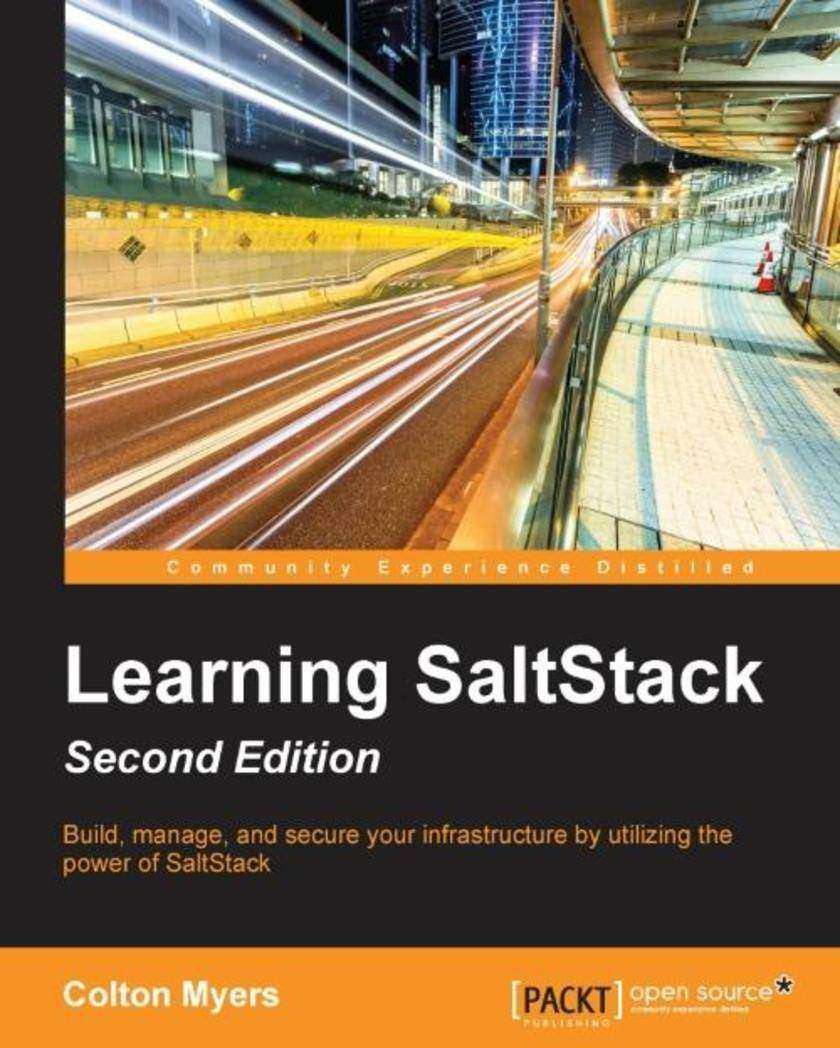
Learning SaltStack - Second Edition
¥63.21
Build, manage, and secure your infrastructure by utilizing the power of SaltStack About This Book First book in the market to incorporate all the latest features of SaltStack. Leverage the power of SaltStack for building, managing and securing your infrastructure. Effectively use commands and control the state of your infrastructure in a jiffy. Who This Book Is For This book is aimed at System Administrators who are looking forward to manage their infrastructure using SaltStack with no prior knowledge about it. What You Will Learn Install Salt on your servers Run commands on all or some of your minions instantly from a central managing server Write custom Salt modules to handle your infrastructure’s unique needs Define the state of your infrastructure and use Salt to enforce that state. Create platform-agnostic state definitions for greater flexibility and power Manage virtual servers on public or private clouds using Salt Cloud Use the event system in Salt to create a reactive and self-healing infrastructure In Detail SaltStack is one of the best infrastructure management platforms available. It provides powerful tools for defining and enforcing the state of your infrastructure in a clear, concise way. With this book learn how to use these tools for your own infrastructure by understanding the core pieces of Salt. In this book we will take you from the initial installation of Salt, through running their first commands, and then talk about extending Salt for individual use cases. From there you will explore the state system inside of Salt, learning to define the desired state of our infrastructure in such a way that Salt can enforce that state with a single command. Finally, you will learn about some of the additional tools that salt provides, including salt-cloud, the reactor, and the event system. We?ll finish by exploring how to get involved with salt and what?s new in the salt community. Finally, by the end of the book, you'll be able to build a reliable, scalable, secure, high-performance infrastructure and fully utilize the power of cloud computing. Style and approach This will be a comprehensive guide on SaltStack along with installation and setting up of Salt on couple of platforms. Then enlightening the readers about remote execution system and configuration management system and ending with concepts of security and best practices.

3D Game Design with Unreal Engine 4 and Blender
¥90.46
Combine the powerful UE4 with Blender to create visually appealing and comprehensive game environments About This Book The only resource that shows how you can incorporate Blender into your Unreal Engine 4 Game environment Create amazing 3D game environments by leveraging the power of Blender and Unreal Engine 4 Practical step-by-step approach with plenty of illustrative examples to get you started immediately Who This Book Is For This book would be ideal for 3D artists and game designers who want to create amazing 3D game environments and leverage the power of Blender with Unreal Engine 4. 3D design basics would be necessary to get the most out of this book. Some previous experience with Blender would be helpful but not essential What You Will Learn Create a fully functioning game level of your own design using Blender and Unreal Engine 4 Customize your level with detailed 3D assets created with Blender Import assets into Unreal Engine 4 to create an amazing finished product Build a detailed dynamic environment with goals and an ending Explore Blender’s incredible animation tools to animate elements of your game Create great environments using sound effects, particle effects, and class blueprints In Detail Unreal Engine 4 now has support for Blender, which was not available in earlier versions. This has opened up new possibilities and that is where this book comes in. This is the first book in the market combining these two powerful game and graphic engines. Readers will build an amazing high-level game environment with UE4 and will show them how to use the power of Blender 3D to create stunning animations and 3D effects for their game. This book will start with creating levels, 3D assets for the game, game progression, light and environment control, animation, and so on. Then it will teach readers to add amazing visual effects to their game by applying rendering, lighting, rigging, and compositing techniques in Blender. Finally, readers will learn how to smoothly transfer blender files to UE4 and animate the game assets. Each chapter will add complexities to the game environment. Style and approach This will have a clear, step-by-step approach to creating game assets in Blender and then importing them to UE4 to create stunning game environments. All asset creation techniques are explained in detail along with tips on how to use them to create your own game environments. The book offers end-to-end coverage of how to design a game level from scratch.
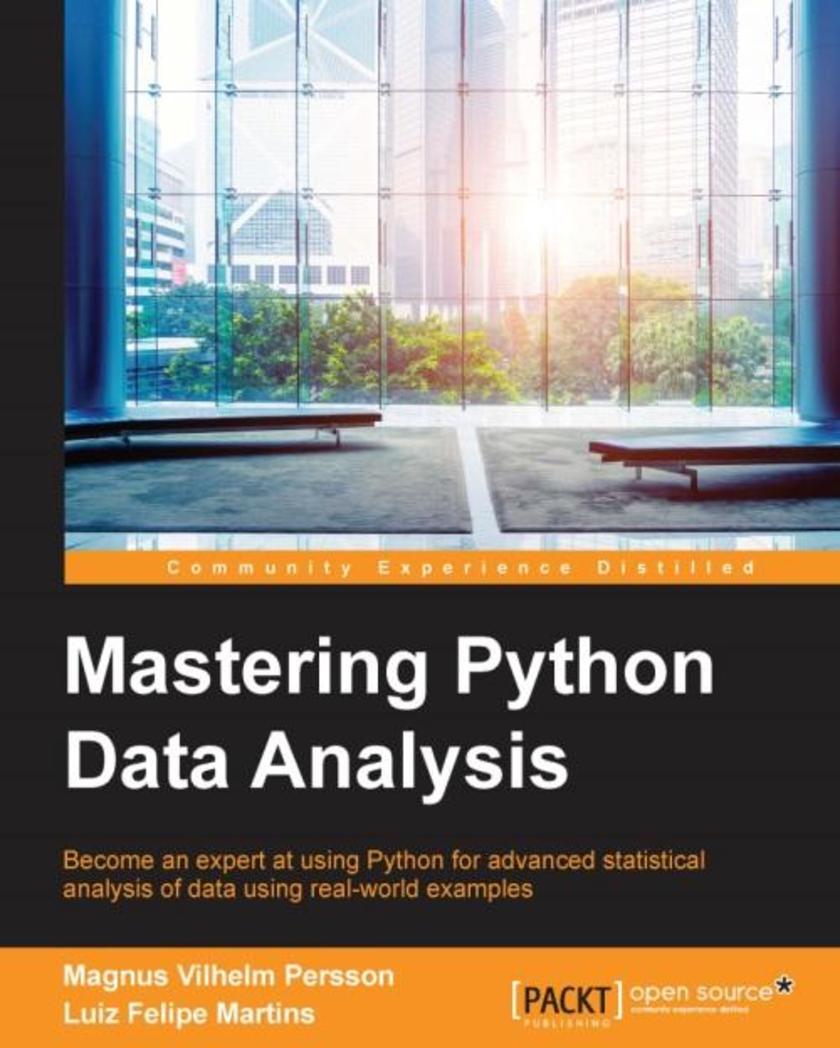
Mastering Python Data Analysis
¥90.46
Become an expert at using Python for advanced statistical analysis of data using real-world examples About This Book Clean, format, and explore data using graphical and numerical summaries Leverage the IPython environment to efficiently analyze data with Python Packed with easy-to-follow examples to develop advanced computational skills for the analysis of complex data Who This Book Is For If you are a competent Python developer who wants to take your data analysis skills to the next level by solving complex problems, then this advanced guide is for you. Familiarity with the basics of applying Python libraries to data sets is assumed. What You Will Learn Read, sort, and map various data into Python and Pandas Recognise patterns so you can understand and explore data Use statistical models to discover patterns in data Review classical statistical inference using Python, Pandas, and SciPy Detect similarities and differences in data with clustering Clean your data to make it useful Work in Jupyter Notebook to produce publication ready figures to be included in reports In Detail Python, a multi-paradigm programming language, has become the language of choice for data scientists for data analysis, visualization, and machine learning. Ever imagined how to become an expert at effectively approaching data analysis problems, solving them, and extracting all of the available information from your dataWell, look no further, this is the book you want! Through this comprehensive guide, you will explore data and present results and conclusions from statistical analysis in a meaningful way. You’ll be able to quickly and accurately perform the hands-on sorting, reduction, and subsequent analysis, and fully appreciate how data analysis methods can support business decision-making. You’ll start off by learning about the tools available for data analysis in Python and will then explore the statistical models that are used to identify patterns in data. Gradually, you’ll move on to review statistical inference using Python, Pandas, and SciPy. After that, we’ll focus on performing regression using computational tools and you’ll get to understand the problem of identifying clusters in data in an algorithmic way. Finally, we delve into advanced techniques to quantify cause and effect using Bayesian methods and you’ll discover how to use Python’s tools for supervised machine learning. Style and approach This book takes a step-by-step approach to reading, processing, and analyzing data in Python using various methods and tools. Rich in examples, each topic connects to real-world examples and retrieves data directly online where possible. With this book, you are given the knowledge and tools to explore any data on your own, encouraging a curiosity befitting all data scientists.
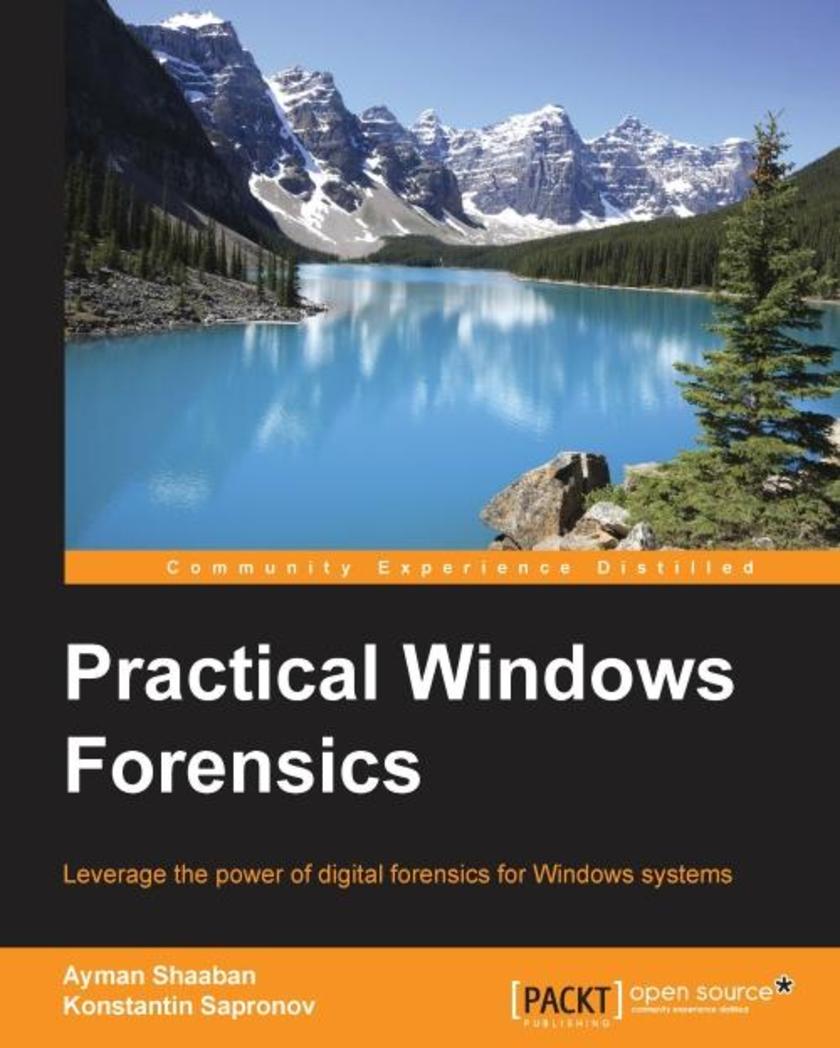
Practical Windows Forensics
¥90.46
Leverage the power of digital forensics for Windows systems About This Book Build your own lab environment to analyze forensic data and practice techniques. This book offers meticulous coverage with an example-driven approach and helps you build the key skills of performing forensics on Windows-based systems using digital artifacts. It uses specific open source and Linux-based tools so you can become proficient at analyzing forensic data and upgrade your existing knowledge. Who This Book Is For This book targets forensic analysts and professionals who would like to develop skills in digital forensic analysis for the Windows platform. You will acquire proficiency, knowledge, and core skills to undertake forensic analysis of digital data. Prior experience of information security and forensic analysis would be helpful. You will gain knowledge and an understanding of performing forensic analysis with tools especially built for the Windows platform. What You Will Learn Perform live analysis on victim or suspect Windows systems locally or remotely Understand the different natures and acquisition techniques of volatile and non-volatile data. Create a timeline of all the system actions to restore the history of an incident. Recover and analyze data from FAT and NTFS file systems. Make use of various tools to perform registry analysis. Track a system user's browser and e-mail activities to prove or refute some hypotheses. Get to know how to dump and analyze computer memory. In Detail Over the last few years, the wave of the cybercrime has risen rapidly. We have witnessed many major attacks on the governmental, military, financial, and media sectors. Tracking all these attacks and crimes requires a deep understanding of operating system operations, how to extract evident data from digital evidence, and the best usage of the digital forensic tools and techniques. Regardless of your level of experience in the field of information security in general, this book will fully introduce you to digital forensics. It will provide you with the knowledge needed to assemble different types of evidence effectively, and walk you through the various stages of the analysis process. We start by discussing the principles of the digital forensics process and move on to show you the approaches that are used to conduct analysis. We will then study various tools to perform live analysis, and go through different techniques to analyze volatile and non-volatile data. Style and approach This is a step-by-step guide that delivers knowledge about different Windows artifacts. Each topic is explained sequentially, including artifact analysis using different tools and techniques. These techniques make use of the evidence extracted from infected machines, and are accompanied by real-life examples.




 购物车
购物车 个人中心
个人中心



